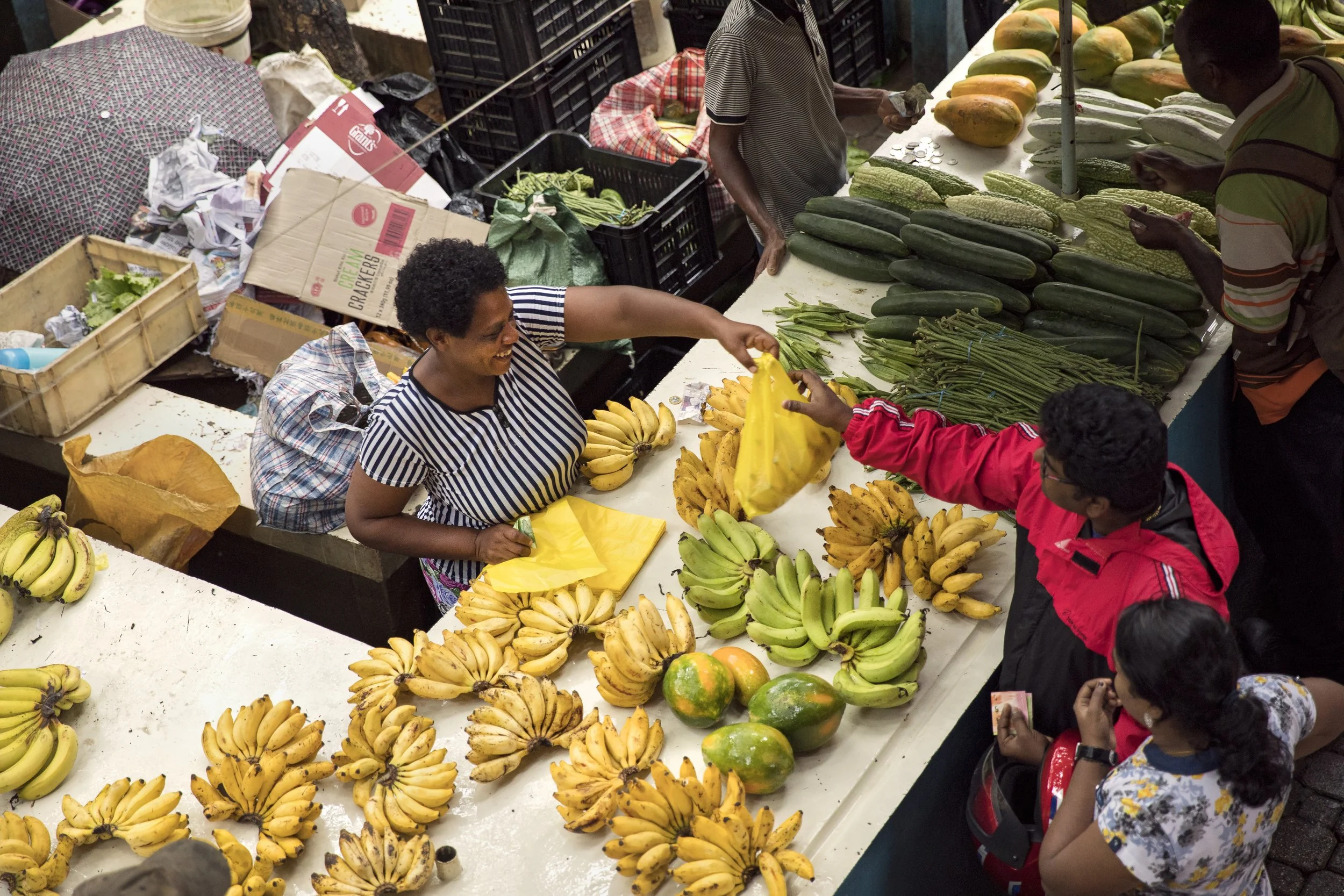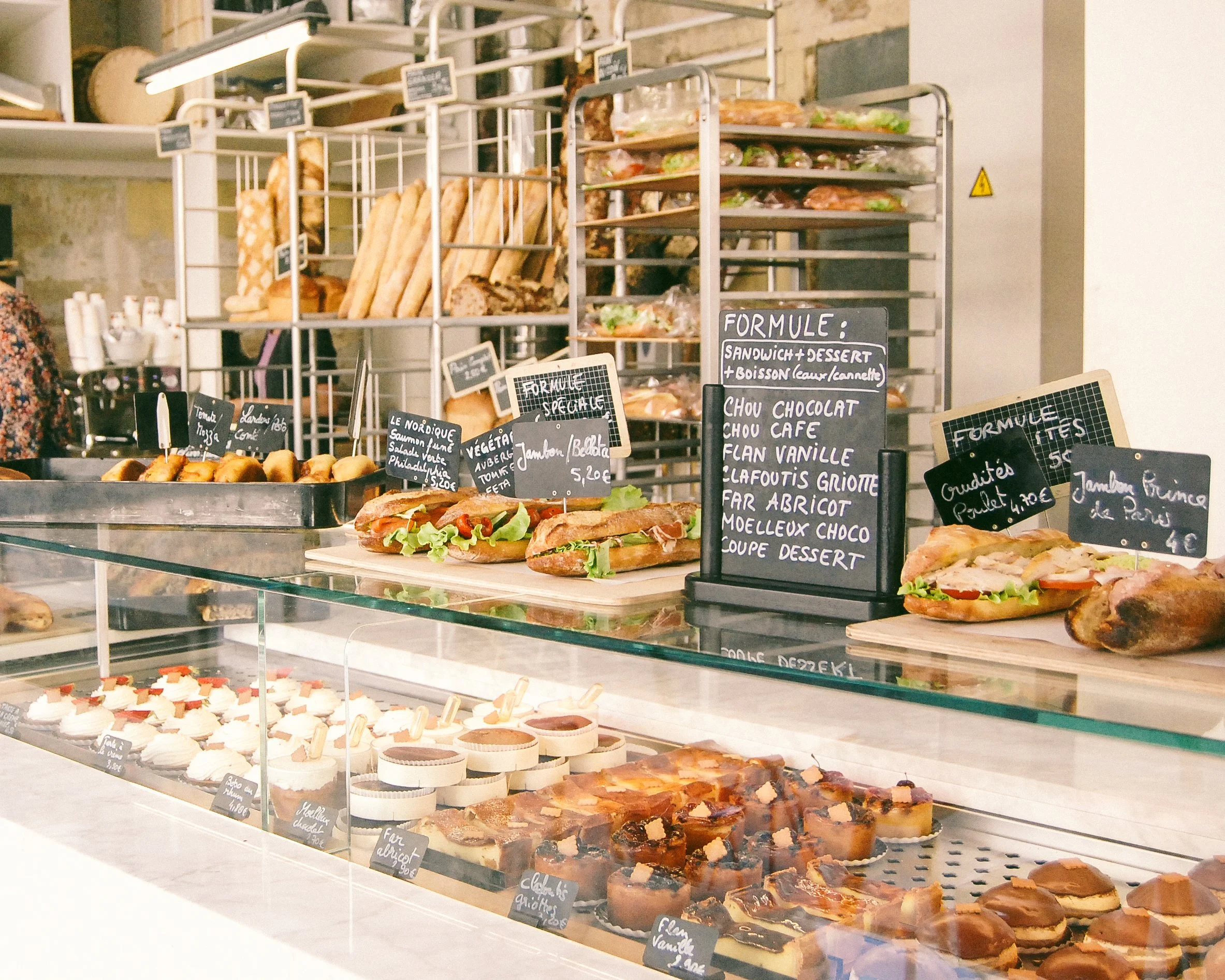The tradition of sharing meals is a custom that transcends national borders and bridges generational divides.
Marketplace in Seychelles. UN Women. CC BY-NC-ND 2.0
Breaking bread has long served as a sacred means of creating community and connection. In the 18th century, the term for a “good friend” in Dutch translated to a “table friend.” Today, such an exchange of friendship is still an elemental ingredient to mealtimes. The settings vary across the globe, from pre-set dinner tables to park picnic benches, floor mats to swiveling bar stools. About a quarter of the world’s population does not sit nightly at a table, but rather gathers around a mat or stands balancing on a wooden plank in the midst of the mud in a market. But, no matter the gathering space, one aspect remains core to nearly all eating traditions: the manner in which food is shared is a ritual that celebrates the communal over the individual.
Sharing small bits of food is a human habit that anthropologists believe connects to a primal need to forge alliances through a sense of communal equality. Such a need has led to a kind of communal snacking culture, in which groups share nibbles of food. From spreads of hummus and babaganoush, to tapas of cheese and olives, to steamed buns of dim sum, communal eating habits around the world exemplify how the best meals are always shared.
Ethiopia
An Ethiopian dish. Malingering. CC BY-NC-ND 2.0
Communal eating is a central part of Ethiopian food culture and is aided with the use of Injera, a thin sourdough-risen flatbread with a spongy texture. Most Ethiopian meals are eaten with one’s hands and from a communal plate placed in the middle of the table. The left hand is considered unclean, and so the right hand is used for eating and ripping apart pieces of Injera to scoop up food. Traditionally, meals begin with the oldest at the table taking the first bite, a custom to indicate respect to elders.
The communal significance of food in Ethiopia is represented through a practice called the gursha: a form of hand-feeding, in which one will place a small morsel of food into another’s mouth. The gesture is usually first given to elders or guests at the meal and signifies a sign of respect, hospitality, and friendship.
Foods to try
Kitfo is a native Ethiopian dish made with raw beef. Similar to an American hamburger, kitfo uses Injera rather than a bun. The dish originates from the Gurage region of Ethiopia and is believed to have emerged from the Orthodox Christian tradition as a means of eating meat to break the fast after Lent.
France
French bakery. Hannah Wilson. CC BY-ND 2.0
French food culture is defined by a sense of intention and relaxation, with meals often lasting for hours at a time. The care characteristic of French culinary culture is exemplified in its “gastronomic meal.” The meal, which became a part of UNESCO’s List of the Intangible Cultural Heritage of Humanity, refers to a kind of dining tradition in which a large meal is prepared to bring family together. Elements of the gastronomic meal include its use of fresh local ingredients, its careful selection of dishes that represent a diverse spread of the country’s regional cuisines, an emphasis on food and wine pairings, an aesthetic table setting, and group conversation throughout the dinner. The meal is often a foundational element to birthday and wedding celebrations and follows a set structure. Starting drinks, or apéritif, begin the meal, followed by up to four courses including a starter, a main dish of fish or meat with vegetables, and a sweet dessert paired with cheese. The meal typically ends with a drink referred to as digestif. Digestifs are characterized by a high alcohol content and rich flavor, and include liquors such as Génépi, Cognac, Armagnac, and Calvados.
Foods to try
While French food is popularly characterized by its flaky baguettes, croissants, and delicate pastries, cuisine varies significantly depending on the region. Cheese and ciders are a popular part of dinners in Normandy, while ratatouille is a family staple in the country’s Mediterranean south.
The Loire Valley boasts bountiful grapes, cherries and berries that are used to make rich liquors and sweet fruit tarts, while the Basque Country pairs fish and meats with spicy herbs and sauces.
Mexico
Mexican meal. VisitPlano. CC BY 2.0
In Mexico, community plays a central role in both the production and consumption of food. In an interview, renowned Mexican chef Margarita Carrillo Arronte described Mexican food as “a women's thing.” Arronte’s statement highlights a cultural tradition in which communal cooking and the sharing of recipes serve as a means of bringing women together, and a conduit for intergenerational knowledge. Dating back to pre-colonial times, the majority of cooks in Mexico have been women. After the arrival of the Spanish in the 16th century, a mix of indigenous, African, and Spanish cooks worked in conquistadors’ kitchens, where they developed a unique culinary blend. Today, some of the top Mexican restaurants have been opened and run by women chefs, the likes of which include Alicia Gironella de Angeli, Patricia Quintana, Monica Patiño, Martha Ortiz Chapa and Carmen 'Titita' Degollado. The State of Michoacán is especially known for its rich culinary life that centers the talents of indigenous female cooks, a status that got the state selected as the host for the upcoming VII Gastronomy Forum, in October 2023.
In 2010, Mexican food was inscribed on UNESCO’s Representative List of the Intangible Cultural Heritage of Humanity, and recognized for its sense of community and collective participation. Local’s use of the milpa system allows for more sustainable farming practices. The system uses intercropping to allow for multiple species to grow in the same place. When it comes to eating practices, singular utensils such as grinding stones and mortars are used rather than forks and knives.
Foods to try
Corn is a prime ingredient of Mexican food, and serves as a base for a diverse range of dishes. Elote, or corn on the cob, is a typical Mexican street food drizzled in mayonnaise and lime juice, while atole uses corn as its base for a hot beverage that can be sweetened with vanilla, cinnamon, and guava. Mexican tamales which date back to the Aztecs, use corn masa as a dough that can be filled with beans, meats, chillies, or vegetables. The most popular use of corn comes in the form of tortillas, a thin pancake shaped flatbread that serves as a base for beans, meats, and fresh vegetables.
Korea
Kimchi. Hyunwoo Sun. CC BY-NC-ND 2.0
The philosophy of yak sik dong won, or “food is medicine,” lies at the heart of Korean cooking. Korean food culture revolves around a key sense of community and an appreciation of food as nourishment for the soul as well as the body. The sharing of banchan, or side dishes, serves as a key example of a communal eating culture. Banchan side dishes include vegetables, seafood, eggs, meats, and kimchi. Rich in fiber and probiotics, kimchi captures Korean culture’s understanding of food as medicine. The dish consists of fermented vegetables including cabbage and radish, mixed with seasonings such as ginger, garlic and spring onions.
Korean meals draw upon the concept of bapsang: the idea that a table is set up for shared enjoyment. Balance plays a key role in Korean meals, and spicy foods are often paired with more delicate and nuanced flavors, such as broths and rice.
Foods to try
Mandu is a popular Korean snack with traditional roots. Now a common example of Korean street food, the dumpling’s origins date back to the 14th century. It is believed that the Korean royal court frequently ate mandu that mimicked the shape of sea cucumbers as a way to represent the bounty of nature. The philosophy at the core of Mandu’s origins extends to its modern use as a staple of the Lunar New Year to represent future prosperity. The preparation of Mandu also incorporates the communal elements of Korean cooking, as families join together to fold the dough into craftful pouches for meats and vegetables.
Jessica Blatt
Jessica graduated from Barnard College with a degree in English. Along with journalism, she is passionate about creative writing and storytelling that inspires readers to engage with the world around them. She hopes to share her love for travel and learning about new cultures through her work.






